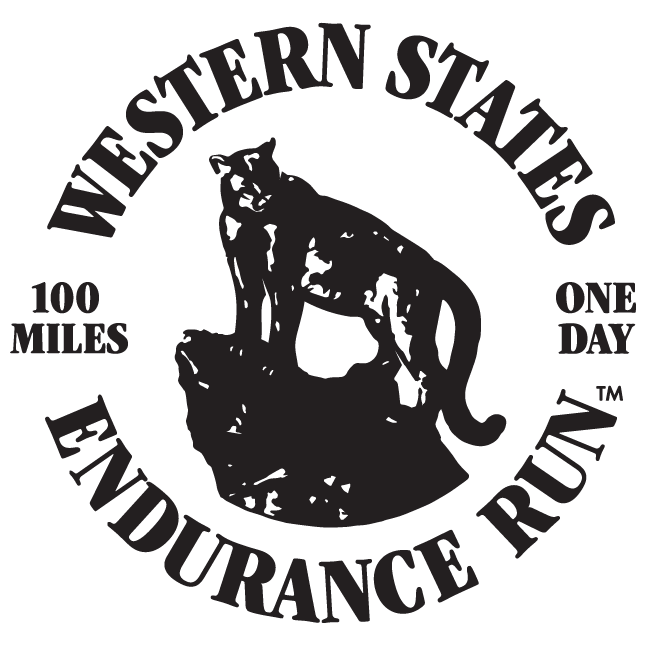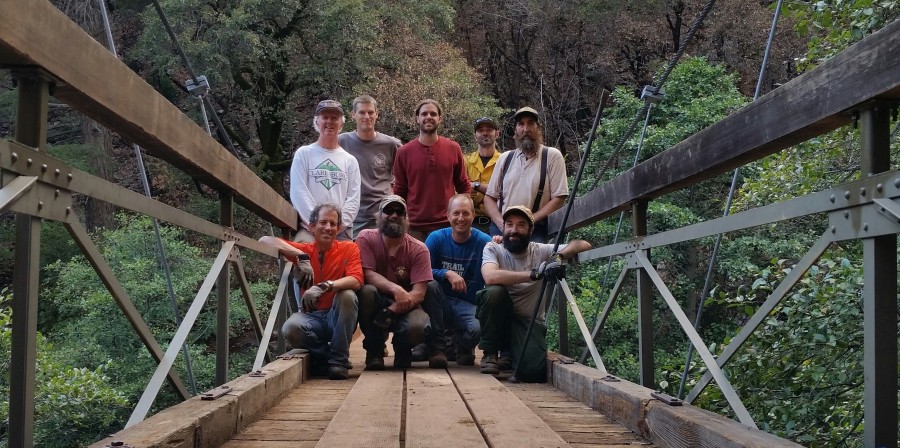FOR IMMEDIATE RELEASE
CONTACT: John Trent, media relations, (775) 842-4871, president at wser.org
WESTERN STATES 100 FEATURES DEEP ELITE FIELD, TRIUMPHANT RETURN FROM ‘AMERICAN FIRE’
AUBURN, Calif. – The 41st running of the world’s oldest and most prestigious 100-mile trail race, the Western States 100-Mile Endurance, promises to be one of the most memorable in the event’s long and venerable history.
More than 360 runners, from throughout the United States as well as 25 countries, will toe the starting line in Squaw Valley, Calif., at 5 a.m. on Saturday, June 28 with a clear goal in mind: the finish line 100 miles distant at Placer High School in Auburn, Calif.
The field includes several of the top names in the sport of ultramarathoning, including last year’s women’s champion, Oregon’s Pam Smith, as well men’s runner-up Rob Krar, 37, of Flagstaff, Ariz. The deep competition at the front will be augmented this year with the presence of several international ultra standouts, competing as part of the Ultra-Trail World Tour (UTWT), a series of the world’s most prestigious ultra runs. The first-year tour has one North American stop: Western States. The group of international stars running at Western States includes such notables as Miguel Heras of Spain, who was second in 2013’s Ultra-Trail du Mont Blanc (UTMB), France’s Thomas Lorblanchet, the 2012 Leadville (Colo.) 100-mile champion, Ryan Sandes of South Africa, Western States’ 2012 runner-up, and 2013 IAU world trail champion Natalie Mauclair of France on the women’s side.
As has been the case for the past several years, the depth of the men’s and women’s fields has been deepened thanks to the race’s ongoing relationship with presenting sponsor Montrail and the Montrail Ultra Cup, a nationwide series of trail ultras which guarantees top finishers a spot at Western States. The Montrail Ultra Cup’s men’s and women’s champions will also be crowned during race weekend.
Race Director Craig Thornley said if the talent at the front is any indication of race success, this year’s edition of Western States has the potential to continue the string of recent memorable runs at Western States, such as the “Unbreakable” duel and course record-breaking performance of Geoff Roes in 2010, Timothy Olson’s course record breaking run of 14:46 in 2012, as well as Olson and Smith’s courageous and scintillatingly fast runs in near-record heat in 2013.
“We have a great group of returning runners, some fresh faces we haven’t seen before and some faces we haven’t seen in a couple of years,” Thornley said. “It should add up to an extremely exciting and competitive race. Western States continues to be the most competitive 100-mile race in the world for both men and women. This year is no exception.”
In addition to Krar, who finished in second in 15:22 in chasing Olson (15:17) to the line in 2013, top contenders include: Ian Sharman, 33, of Walnut Creek, Calif., fourth in 2013; Dylan Bowman, 28, of Emerald Hills, Calif., fifth last year; Nick Clark, 40, of Fort Collins, Colo., sixth last year and gunning for Mike Morton’s master’s record of 15:45; Jez Bragg, 33, of Blandford, Forum, Great Britain, and a past top-five performer at Western States; and Max King, 34, of Bend, Ore., one of the most talented and versatile ultra runners in the world who will be making his 100-mile debut at Western States.
On the women’s side, Smith’s run of 18:37 in last year’s oppressive conditions where temperatures topped out well above 100 degrees, remains one of the most impressive efforts in recent memory. The 39-year-old pathologist from Salem, Ore., will be pressed by three-time Western States champion Nikki Kimball, who finished second in 2013; the ageless Meghan Arbogast, 53, of Cool, Calif., fourth last year and generally considered the finest over-50 runner in the world; Emily Harrison, 27, of Flagstaff, Ariz., seventh last year, as well as two young, talented ultra runners who will be marking their Western States debuts: Stephanie Howe, 30, of Bend, Ore., and runner-up to Harrison at the highly competitive Lake Sonoma 50-miler in April; and Kaci Lickteig, 27, of Omaha, Neb., who has third at Lake Sonoma and second at the Rocky Raccoon 100-miler in Texas earlier this year.
An added wrinkle to this year’s race narrative is the course itself. An iconic and historic section of the trail from Last Chance to near Devil’s Thumb was hit hard by last August’s American Fire. The fire, which raged from Aug. 10-29, consumed more than 27,000 acres, involved more than 1,900 firefighters and had a footprint of nearly 30 square miles. Western States, working in collaboration with the Western States Trail Foundation/Tevis Cup horse ride, mobilized a motivated group of volunteers who throughout the winter and fall accumulated more than 6,000 hours to bring the burned areas of the trail back.
The effort included installation of a new bridge where the Pacific Slab Mine Bridge once stood heading into the Deadwood Canyon section of the course (pieces of the new bridge were hauled nearly one mile into the deep, steep canyon, carried on the backs of a group of 50 volunteers), as well as mitigation efforts on burned areas such as the Pucker Point loop near the historic site of Last Chance.
Thornley said he was pleased to report that the approximate 10-mile stretch of the trail that was affected by the fire will be open, with no re-routing of the runners other than a river crossing by safety cable at the bottom of Deadwood Canyon at the North Fork of the Middle Fork of the American River.
“What our volunteers and the joint trail team between Western States, the Tevis Cup and our partners from the Forest Service have accomplished over the past few months has been really remarkable,” Thornley said. “The community of ultra runners and trail team workers has really come together to accomplish something very special. The Western States Trail is back and open for use. We couldn’t be prouder of what our people have done to help make this happen. A big ‘thank you’ to all of our volunteers.”
This year’s Western States will feature several special events leading up to the race start on the morning of June 28. Here is a brief recap of the week’s schedule:
Tuesday, June 24 and Wednesday, June 25:
8 a.m.-5 p.m., First Annual Medicine in Ultra-Endurance Sports Conference in Squaw Valley, led by Western States Medical Research Director, Dr. Marty Hoffman;
Thursday, June 26:
10 a.m., Trek to Emigrant Pass for annual flag raising at Watson Monument. Program begins at noon;
6:30 p.m., Veteran’s Panel hosted by Andy Jones-Wilkins, Squaw Valley Conference Center.
Friday, June 27:
9 a.m.-1 p.m., runner check-in and drop bag drop-off, Start Line Arch at Olympic Plaza in Squaw Valley;
10 a.m., Montrail 6K Uphill Challenge to High Camp;
1:30 p.m., pre-race meeting and briefing, Squaw Valley Conference Center;
2:30 p.m., Ultra-Trail World Tour Press Conference featuring several of the sport’s stars, Squaw Valley Conference Center.
Saturday, June 28:
5 a.m., race start from Start Line Arch, Squaw Valley;
Saturday evening: Men’s winner expected to arrive at Placer High School track, 7:45-8:15 p.m.; women’s winner expected to arrive at Placer High School track, 10-11 p.m.
Sunday, June 29:
5 a.m., last sub-24-hour silver belt buckle finisher has finished;
11 a.m., last official finisher has finished;
12:30 p.m., awards ceremony at Placer High School track.


































